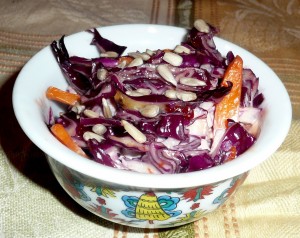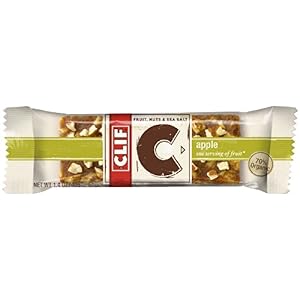A reporter recently asked me for the top five foods I recommended avoiding feeding to young children to boost their chances of growing up allergy-free.
I found this to be an impossible task.
From all that I’ve learned in my studies over the last decade, I believe that each person’s hypersensitivity profile is unique to themselves. What might cause problems for Joey might be fine for Susie, and vice versa.
Although certain food groups may seem to commonly cause adverse reactions –like dairy, gluten, or soy – it’s too easy to unnecessarily restrict your child’s diet and miss basic nutrients by making random guesses at what allergens are already causing or might someday cause distressing issues in the general population.
After all, most people (70-90%)have normal tolerance thresholds and never or rarely experience abnormal reactions from foods. Only about 7% of the population actually has Celiac Disease and reacts to gluten, for example.
So you see how it might be difficult to make a blanket statement to recommend that everyone avoid all the same foods with the goal of decreasing everyone’s potential for developing allergies.
Lowering Your Overall Toxic Load Will Increase Tolerance
That said, I do believe that by eliminating as many chemical items and known poisons from your child’s overall toxic load as possible you’ll help his/her body develop higher tolerances and experience fewer allergic reactions from anything.
These are the items I would suggest eliminating (or at least minimizing) from a child’s diet in order to lower his/her potential for asthma, allergies, and other aberrant immune reactions:
1. Food Dyes. A recent compilation of studies found a correlation between ADHD and commercial food dyes used in many familiar products. These dyes are in almost every food item marketed to children, and in many other commonly eaten products.
I can see this happen in my own son as his behavior will deteriorate rapidly after eating something artificially colored. The food dyes cause hypersensitivity reactions in him that result in a mediator (i.e. histimine, et al.) release. This is often called an allergic reaction, though the correct term is a “hypersensitivity reaction.” The mediators/histamines/cytokines cause swelling in the brain that manifests in behavioral changes and mental distraction. Removing food dyes can eliminate the need for Ritalin or other behavior-modification drugs.
2. Synthetic Sugars. From Splenda to Aspartame, Sucralose, Fructose, and High Fructose Corn Syrup, these all work to confuse the pancreas and create an off-balance internal environment. They’ve also been shown to contribute to weight gain, not weight loss. Give children real raw cane sugar, pure maple syrup, or honey when possible and avoid all artificial sweeteners.
3. “Natural Flavors”. The term on a label of “natural flavors” may translate to a chemical brew of more than 40 noxious components. See here for a list of the “natural flavors” in one strawberry milkshake. The ingredients in “natural flavors” are considered top secret and not public information.
4. Artificial and “Natural” Fragrances. Again, I’m referring to the labeled term “natural aromas or fragrances” used in many cosmetics, personal care items, soda pops, markers, and other products.
Aromas are physical molecules that travel into our bodies when we inhale. Breathe in deeply to fully appreciate the fresh scent offered by that dryer sheet or air freshener spray, and you’re bringing those synthetic, laboratory-constructed molecules down deep into your lung tissues where they can get trapped and come back to haunt you later.
Many artificial scents and flavors are made from petrochemical derivatives. Artificial fragrances contribute heavily to one’s toxic load, and for asthmatics and other hypersensitive people they can trigger an immune response.
5. Petroleum Products. Our modern society is saturated with petrochemicals that are in every plastic item we touch, almost every water bottle we drink from, and every canned food we eat. Our cosmetics are full of petroleum, as are our skin care lotions, suntan lotions, and perfumes. Our skin is our largest organ, and it did not evolve to handle being smothered by a toxic sludge found far below the surface of the earth.
Everyone’s tolerance threshold for toxins and allergens is different.
Once a person breaches their tolerance threshold and enters toxin overload, you might see a cascade effect where more and more substances cause more and more reactions. These issues may manifest as asthma, IBS, migraines, exzema, fibromyalgia, hives,… and on and on. We’re now learning that many auto-immune responses, perhaps even multiple sclerosis, may be due to hypersensitivity reactions.
Alessio Fasano, professor of pediatrics, medicine and physiology and director of the Mucosal Biology Research Center and the Center for Celiac Research at the University of Maryland School of Medicine, wrote in Scientific American’s August, 2009, issue that,
“Indeed, a growing body of evidence suggests that virtually the same trio of factors underpins most, and perhaps all, autoimmune diseases: an environmental substance that is presented to the body, a genetically based tendency of the immune system to overreact to the substance, and an unusually permeable gut.”
Get rid of the chemicals as a start down the right path for avoiding allergies.
While it may be impossible to say what foods everyone should avoid to decrease their risk of developing allergies, it’s much easier for me to say which chemicals and synthetic substances we should avoid to avoid crossing all of our tolerance thresholds, not just in kids.
 Brad brought his extensive knowledge of holistic health into our conversation about how unidentified food and chemical sensitivities can cause problems ranging from migraines, IBS, and fibromyalgia to autoimmune diseases like multiple sclerosis.
Brad brought his extensive knowledge of holistic health into our conversation about how unidentified food and chemical sensitivities can cause problems ranging from migraines, IBS, and fibromyalgia to autoimmune diseases like multiple sclerosis.


